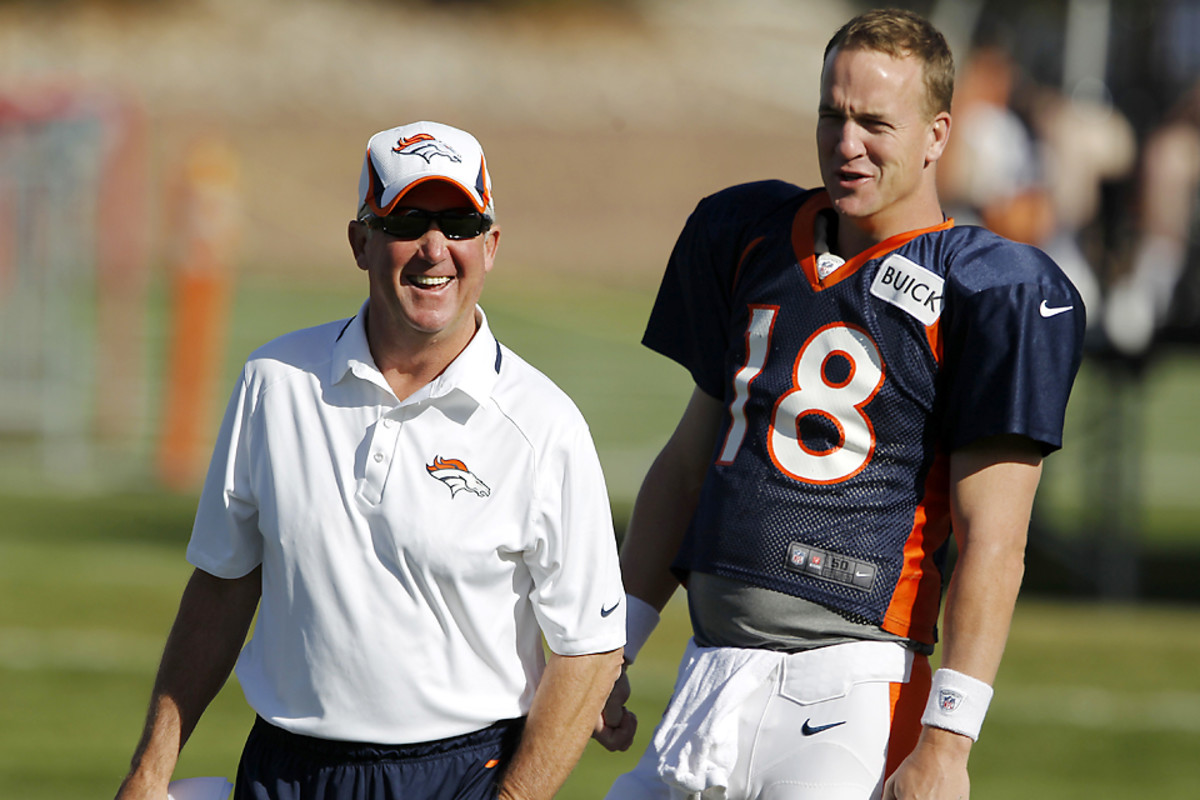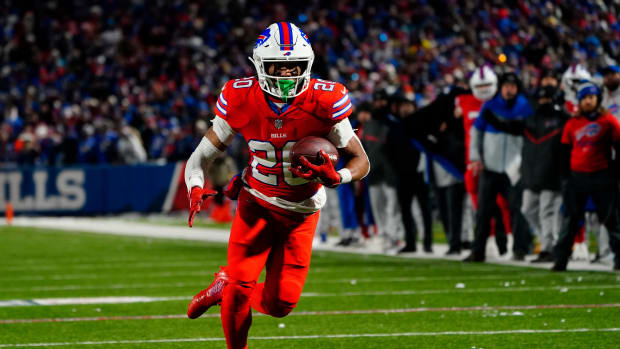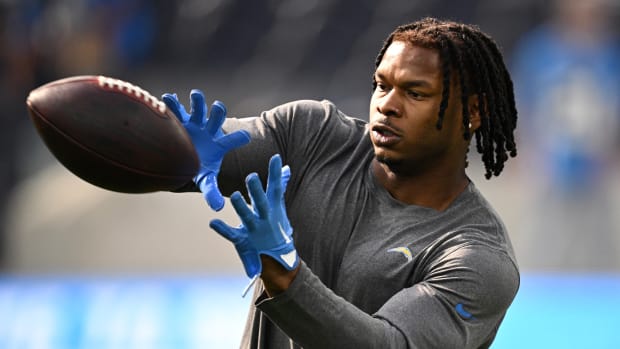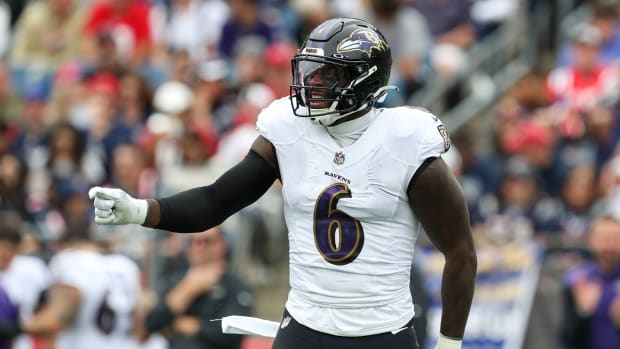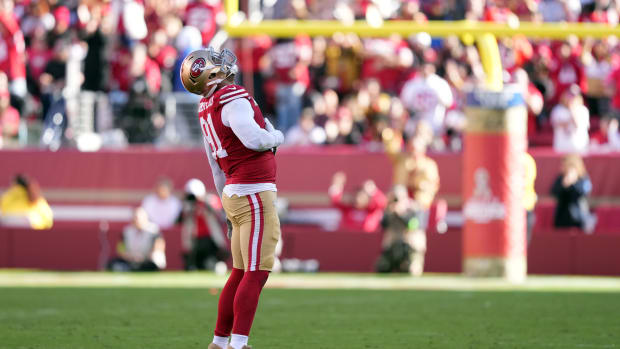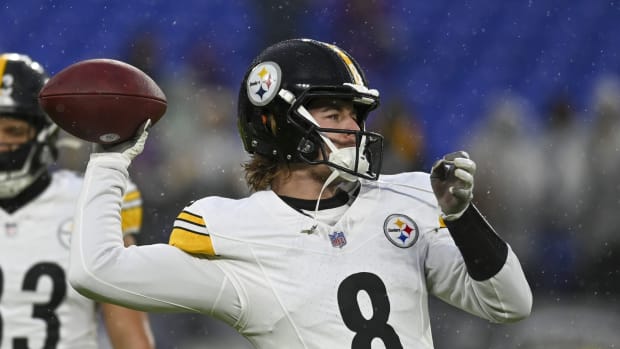Broncos Preview: No Von, No Problem
Last year, Denver Broncos Vice President John Elway bet $18 million that a then-36-year-old Peyton Manning could return to his Hall of Fame form after four neck operations and 21 months away from live action. The bet paid off. After an up-and-down September, Manning gradually regained his arm strength and rhythm over the course of the season. He wound up leading the AFC in touchdowns (37), passer rating (105.0) and yards per attempt (7.99), finishing 12 votes shy of a record fifth MVP award.
Unfortunately for the Broncos, while Manning’s regular season was reminiscent of those from his 20s, so was his postseason, as he threw two very costly interceptions in the double-overtime divisional round loss to the Ravens. Still, almost no one would go so far as to say Manning cost the Broncos a chance at victory. But some might say head coach John Fox did. After Jacoby Jones’ improbable 70-yard touchdown tied the game, Denver had possession at the 20, with 31 seconds left and two timeouts. Occasions like this are the reason you spend $18 million on a quarterback. But Fox, sensing shellshock throughout Mile High, chose to take a knee and play for overtime.
The Broncos wound up getting other chances in that game but couldn’t capitalize on them. Nevertheless, their storyline entering 2013 is not about getting over any sort of hump. Having 13 wins last year and finishing in the top four in scoring or yardage on both sides of the ball, they are too good for that. The same credentials that made their playoff exit such a painful disappointment now make them the AFC’s favorite.
OFFENSE
Not long ago, the talk throughout the Rocky Mountains was about Tim Tebow’s transcendent leadership. This was laughable at the time; with Manning now around, it’s downright hysterical in hindsight. Whereas before the Broncos had a quarterback who could encourage his teammates to succeed, they now have a quarterback who can actually help his teammates succeed. In the NFL, that is the definition of leadership.
Since Manning’s arrival, "knowing" has replaced "hope" in Denver. Broncos offensive linemen, for example, now know that their quarterback is going to be exactly where he’s supposed to be in the pocket. And they know the ball is going to come out on time. So, with the guesswork removed, they’re able to narrow their focus and block more aggressively. Receivers now know that 99 times out of 100, their quarterback is going to read the coverage smartly. Which means, if they’re open, they’re going to get the ball. (Not surprisingly, they’ve all become much better route runners.) Broncos running backs now know that if they’re sharp in pass protection, they’ll earn the quarterback’s trust, which likely means regular playing time. Regular playing time can spell 15-20 carries and a crack at an easy 100 yards because Manning loves to audible to a run play when he sees a soft seven-man box.
Actually, pass-blocking, while important, may not be quite as significant for backs in Denver. Most of the time, Manning prefers five-man protection and to send his back on a short dumpoff route. This is one of many distinct characteristics of Manning’s system.
A more prominent characteristic is static formations. Because Manning likes to get a still picture of the defense, the Broncos eschew almost all presnap motion and shifts. They just line up and hold still while Manning dissects the landscape.
Another characteristic is simplicity. Manning’s incessant presnap gyrations have created the idea that his system is complex. In reality, it’s very basic. That’s how teammates can keep up with Manning’s perfectionism. The Broncos do not do a lot of things; they just do a handful of things really well. Here's a graphic breakdown of some of their staple pass plays.
The Broncos have all the necessary personnel to make Manning’s system click. From a base standpoint, they have a pair of fairly supple tight ends—Jacob Tamme and Joel Dreessen—who can run a variety of underneath and intermediate routes off the line of scrimmage or flexed out. This allows for versatile dual tight end sets that can leave defenses unsure whether to play their base unit or their nickel.
Vulnerable as an indecisive defense can be, don’t expect Manning and new offensive coordinator Adam Gase—who was the quarterbacks coach last year and takes over for the departed Mike McCoy—to invest a lot of game-planning energy into creating these sorts of mismatches. Sure, if they catch a defense in an unfavorable grouping, they’ll accelerate their beloved hurry-up. But with precise, naturally disguised play designs being run by a quarterback with uncanny ball placement and timing, the Broncos believe their receivers don’t have to get major separation to gain productive yards. So instead of trying to outsmart a defense, Denver simply focuses on out-executing it.
Last season, the Broncos, according to Football Outsiders, went with standard two-tight end personnel 28 percent of the time, seventh most in the league. They went with much more predictable three-wide receiver personnel 64.4 percent of the time, which by a wide margin was second most in the league (behind Buffalo). So it’s no surprise they signed Wes Welker in free agency. The 10th-year veteran makes an already lethal offense even deadlier.
With Demaryius Thomas having 1,434 yards on 94 catches last year and Eric Decker registering 85 catches and 1,064 yards, there may not be enough available balls for Welker to post the sixth 100-catch campaign of his career. But even if his receptions drop, his yardage could still be around 1,100 or 1,200. Based on how they used Brandon Stokley, the Broncos will likely send Welker, a shallow-cross connoisseur, on more downfield seam patterns than the Patriots did.
Welker’s presence means Denver will be running the ball against a lot of nickel fronts. Quick and shifty second-year pro Ronnie Hillman is built for such space-oriented carries, but if the Broncos viewed him as anything more than a change-of-pace back, they wouldn’t have drafted Montee Ball in the second round. Ball had nearly 1,000 touches at Wisconsin and is expected to vie immediately for No. 1 duties. Scouts like his decisiveness to the hole and sharp change-of-direction. In college he wasn’t much of a receiver, though, which could leave the door open for Hillman or at least cracked for the solid but far from spectacular Knowshon Moreno. (Hillman has gotten the bulk of the first team reps so far.)
Up front, Denver might have the best five-man unit in the NFL. Left tackle Ryan Clady is a sensational athlete who can dominate on the ground and battle top pass rushers without any help. Assuming his surgically repaired shoulder is okay, he’s deserving of the lucrative long-term contract he just signed. At left guard Zane Beadles is an impressive run-blocker, particularly in employing double teams.
The same could have been said about center J.D. Walton prior to his ankle problems. His second major surgery in less than one calendar year brought about the return of Dan Koppen, who promptly blew out his knee over the summer. At first this seemed to pave the way for either last year’s undeveloped fourth-round pick, Philip Blake or, more likely, the stiff and slow-footed guard Manny Ramirez to start at center. However, Manning prefers veteran centers, so the Broncos signed Ryan Lilja, a cerebral 31-year-old who protected Manning for several years as a guard in Indy. Lilja played center in Kansas City last year and will likely wind up as the first-stringer here.
At right guard is Louis Vasquez, a light-footed ex-Charger who signed for four years, $23.5 million. At first blush, Vasquez’s arrival was a little surprising given that incumbent Chris Kuper had been one of the top 15 or 20 guards in the league. Kuper, however, is having trouble recovering from a second major ankle operation in less than two years. Rounding out the front five is right tackle Orlando Franklin, a 2011 second-round pick who can move people on the ground and has shown marked improvements as a one-on-one pass-blocker.
DEFENSE
Von Miller is the catalyst for this entire defense. (Hence it was considered such big news when the league announced his six-game suspension.) The case for Miller as best defensive player in the NFL would go something like this: Entering his third season, the 250-pounder offers the game’s most dynamic combination of speed and power. He augments that with supple body control and violent hands. Naturally, Miller can beat blockers, even double teams, from the outside or inside. He has also become a formidable, if not dominant, playside run defender from his 4-3 strongside linebacker position. And, he’s no longer a liability when forced into coverage.
Bolstering Miller’s case is his functional versatility within Denver’s sub-packages. Not only is he sensational off the edge as a nickel and dime defensive end, he’s also sensational as a standup inside blitzer, drop-back zone defender or spy (where he’s been huge for Denver against mobile quarterbacks). Fox and defensive coordinator Jack Del Rio have shrewdly built an array of different attacks around Miller, and that variety was a leading factor in Denver’s third-down defense ranking first in the league last year.
A big reason Fox and Del Rio can be so variegated and aggressive in using Miller is they have back level defenders who can be trusted in man coverage. Remarkably, it starts with a 35-year-old cornerback, Champ Bailey, who is coming off a record-tying 12th Pro Bowl. Bailey may not be quite as explosive as he once was (especially early this season given his current foot injury), but he compensates with superb mirror-press technique. Last season, he frequently shadowed the opposing team’s top receiver with minimal safety help.
Von Miller's suspension for violation of league policy robs the Broncos of one of the league's top defensive playmakers.
Across from Bailey, newcomer Dominique Rodgers-Cromartie has the raw talent to be a top-10 cover corner, though after his two hot-and-cold years in Philly, no one quite knows what to expect (including the Broncos, who signed the 27-year-old to a two-year, $10 million contract that seems both committal and noncommittal). If Rodgers-Cromartie struggles (he’s been battling a bum ankle), then Chris Harris, one of the league’s better nickel slot corners, can play outside in the base 4-3. Or, perhaps even undersized but athletic Tony Carter—who Fox has said is as good as any cover corner he’s coached—could get a look. Remarkably, Denver’s cornerback depth may not stop here, as 2012 fourth-rounder Omar Bolden and 2013 third-rounder Kayvon Webster are also on the roster.
The safety position is less stacked for this club, but not barren. Obviously, Rahim Moore is under a lot of pressure not only to bounce back from his costly playoff blunder but also to become a more consistent pass defender in general. That’s his only ticket to playing time, given that, while he’s a decent hitter, he’s not big enough, at 200 pounds, to regularly play in the box. Moore’s job is anything but secure, as the Broncos have shown a willingness to play Quinton Carter, been impressed with David Bruton in minicamps and brought in 12th-year veteran (and 11-year cornerback) Quentin Jammer to try at centerfield. The strong safety starting will be Mike Adams, whose ability to cover tight ends man-to-man lends valuable schematic freedom to Fox and Del Rio.
An Unknown
With Von Miller out for six games, the Broncos are looking for any help they can get at linebacker. That's forcing a fifth-round rookie into the spotlight.
Man coverage prowess is also what makes outside linebacker Wesley Woodyard so important to this defense. In fact, the sixth-year pro might be the best all-around pass-defending linebacker in football, which more than makes up for his mild limitations against the run.
Assuming new weakside linebacker/defensive end Shaun Phillips can fill at least most of Elvis Dumervil’s pass-rushing shoes (which he should), second-level run-defense becomes the only real concern with the Denver D (come late October, that is, when Miller will be back and the corners should all be healthy). Last year, the Broncos’ run defense bogged down after Keith Brooking replaced Joe Mays at middle linebacker. The 37-year-old Brooking had declined considerably from his Pro Bowl days in Atlanta, but unlike Mays, he made all the right signal calls. With Mays being released in late July, the Broncos had been using fringe veteran Stewart Bradley at Mike instead of trying their luck with untested 2011 third-round pick Nate Irving. Last year’s sixth-rounder, Danny Trevathan, could also be a possibility, though like Woodyard, he’s much better suited to play outside. Woodyard, however, will likely open the season in the middle while Bradley nurses a wrist injury.
Fortunately for Denver, any weaknesses at linebacker will be partially masked by a powerful front four. To Fox and Del Rio, owning the trenches with just four bodies is paramount. (Broncos defensive linemen are even taught not to change their technique when there’s an eighth defender in the box.) It’s no surprise Elway spent a second-round pick on tenacious tackle/end Derek Wolfe last year and a first-rounder on explosive tackle Sylvester Williams this year. The two are expected to head a rotation that will also include potentially disruptive veteran Terrance Knighton and underrated gap-shooter Kevin Vickerson inside. On the outside, the versatile and quietly effective Robert Ayers will rotate with Shaun Phillips.
SPECIAL TEAMS
Kicker Matt Prater might be a tad overpaid after signing a four-year, $13 million contract last year. His career field goal success rate of 79% is 27th among active players. Britton Colquitt, benefiting at least a little from Denver’s thin air, led all AFC punters with a net average of 42.1 last season. In the return game, Trindon Holliday had a combined seven touchdowns on punts and kicks in the preseason, regular season and playoffs.
BOTTOM LINE
The Broncos have no glaring weaknesses and a host of significant strengths. They have to be considered the favorites in the AFC.
Andy Benoit is diving deep into each team’s prospects for 2013. Read what he’s done so far.
































